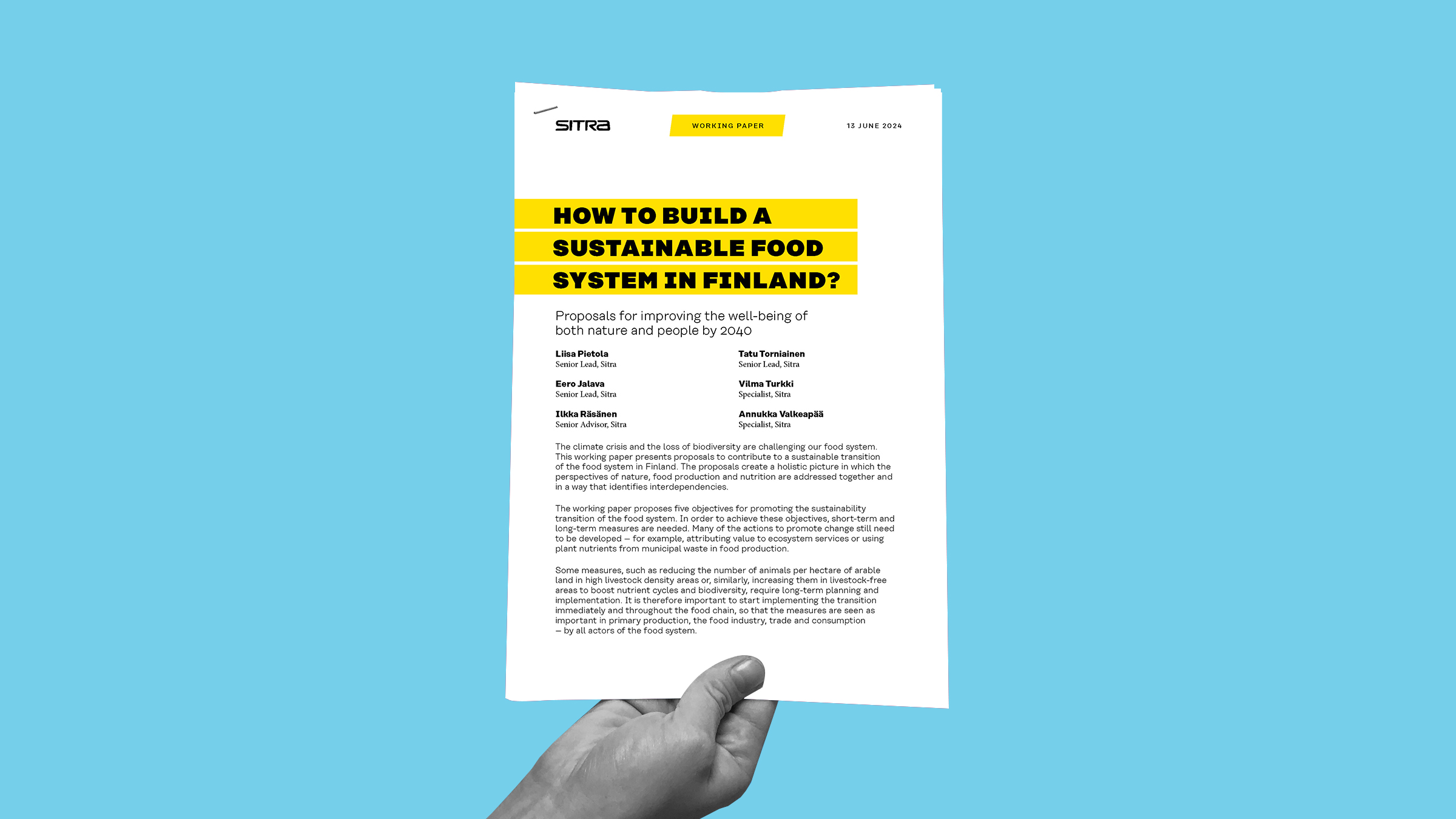This working paper offers proposals for contributing to the sustainable transition of the food system in Finland. The proposals create a holistic picture in which the aspects of nature, food production and nutrition are addressed together and in a way that identifies interdependencies.
As a northern agricultural country, Finland has its own particularities in terms of climate and soil conditions. With only 7% of its land area used for arable crops and a short growing season, global indicators are not relevant when assessing food sustainability issues. To emphasise security of supply, the paper places the role of primary production at the heart of the issue, alongside nutrition and social issues.
The food system faces challenges caused by climate change and nature loss. But technology, consumer knowledge and a highly competitive agricultural sector run by innovative farmers will enable the food system to change. Food produced in a sustainable food system contributes to public health. Food is produced and consumed in a way that preserves, optimises the use of and recycles natural resources. This promotes the circular economy and creates added value and profitability for the whole food system.
The sustainability transition can be achieved by following the measures and principles set out under four objectives, which, if successful, will create the opportunity to fulfil a fifth aim.
- Sustainable agriculture adapts to the limits of nature’s carrying capacity
- Profitable agriculture enables a sustainable food system
- People in Finland eat sustainably
- The food system creates local inclusion and well-being
- High-quality, ecologically sound Finnish food is exported across the world.
In order to achieve the objectives, short and long-term measures are needed. Many of the actions that promote change still need further development – for example, attributing value to ecosystem services or using nutrients from municipal waste in food production.
Some measures, such as reducing the number of animals per hectare (reducing livestock density), require long-term planning and implementation in specific areas of Finland. It is therefore important to start the change immediately and simultaneously throughout the food chain. For the success of the measures, it is essential that they are perceived by society as being fair.


















Recommended
Have some more.